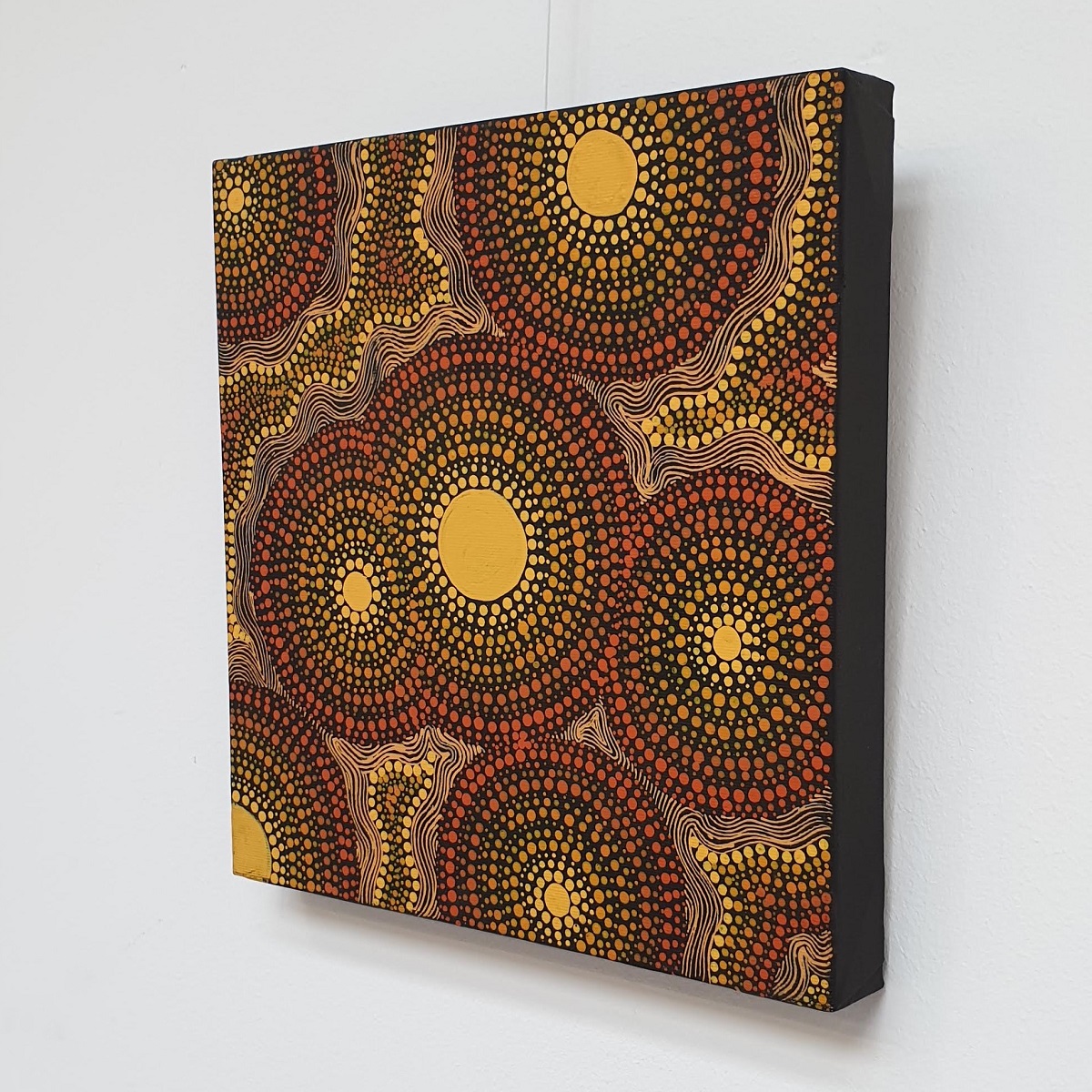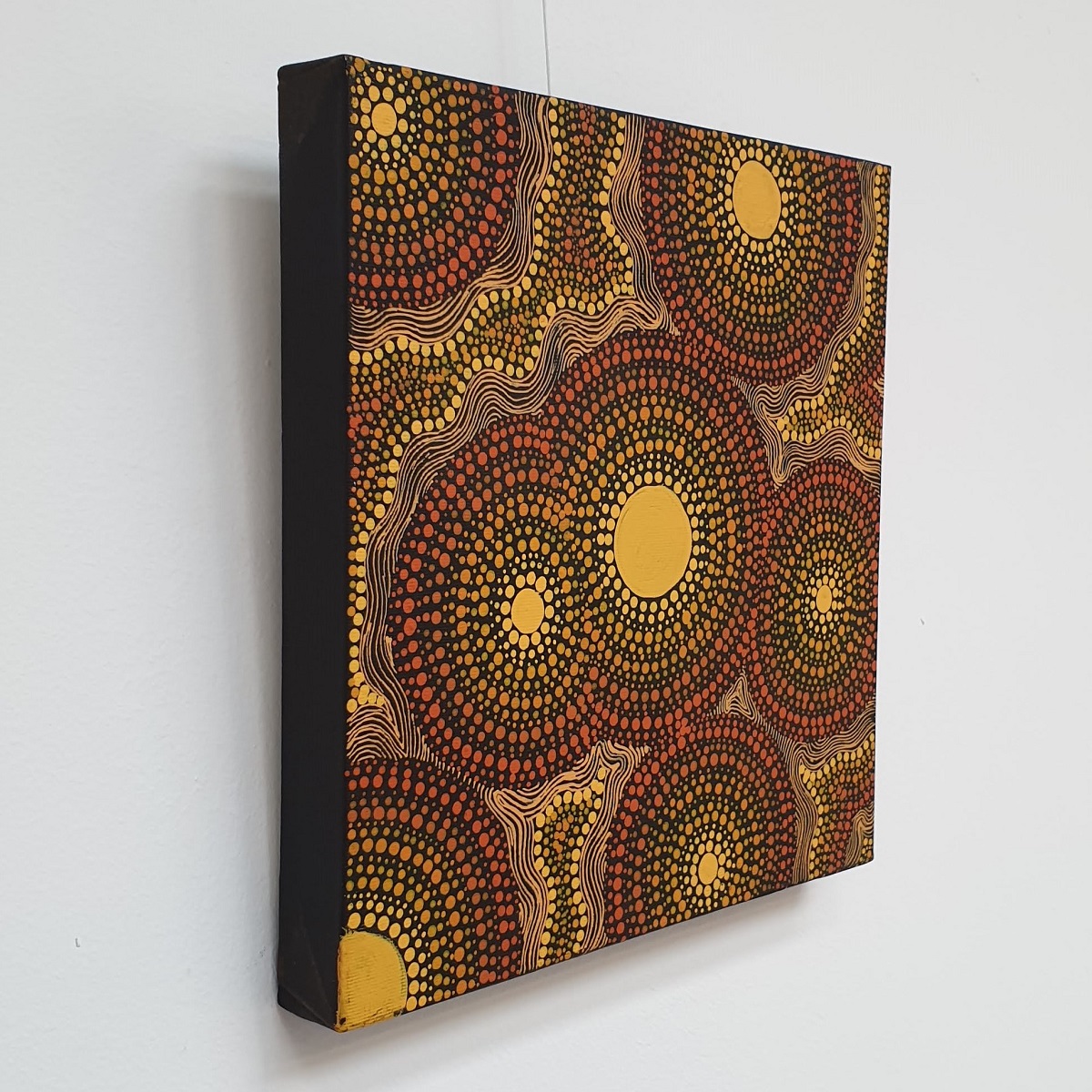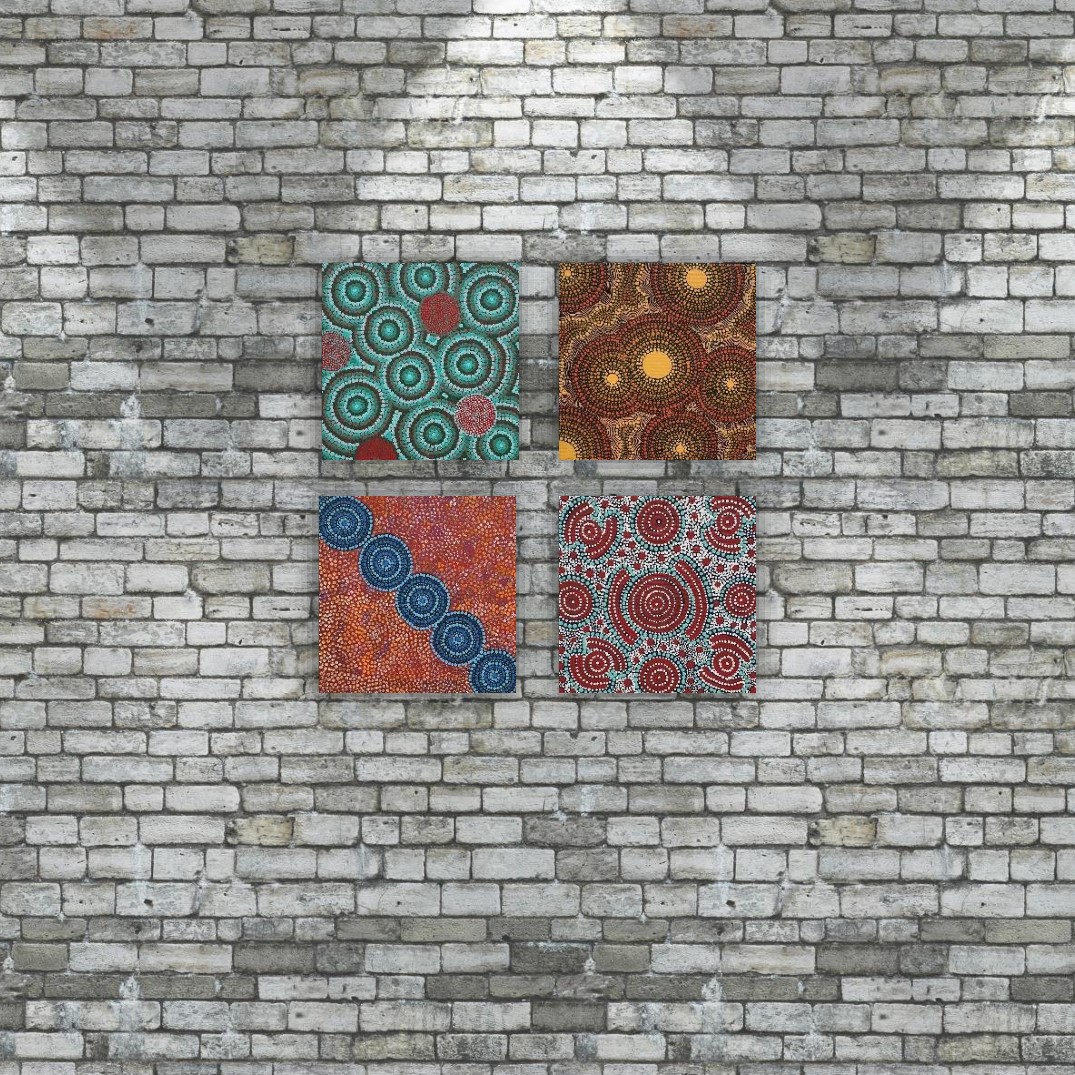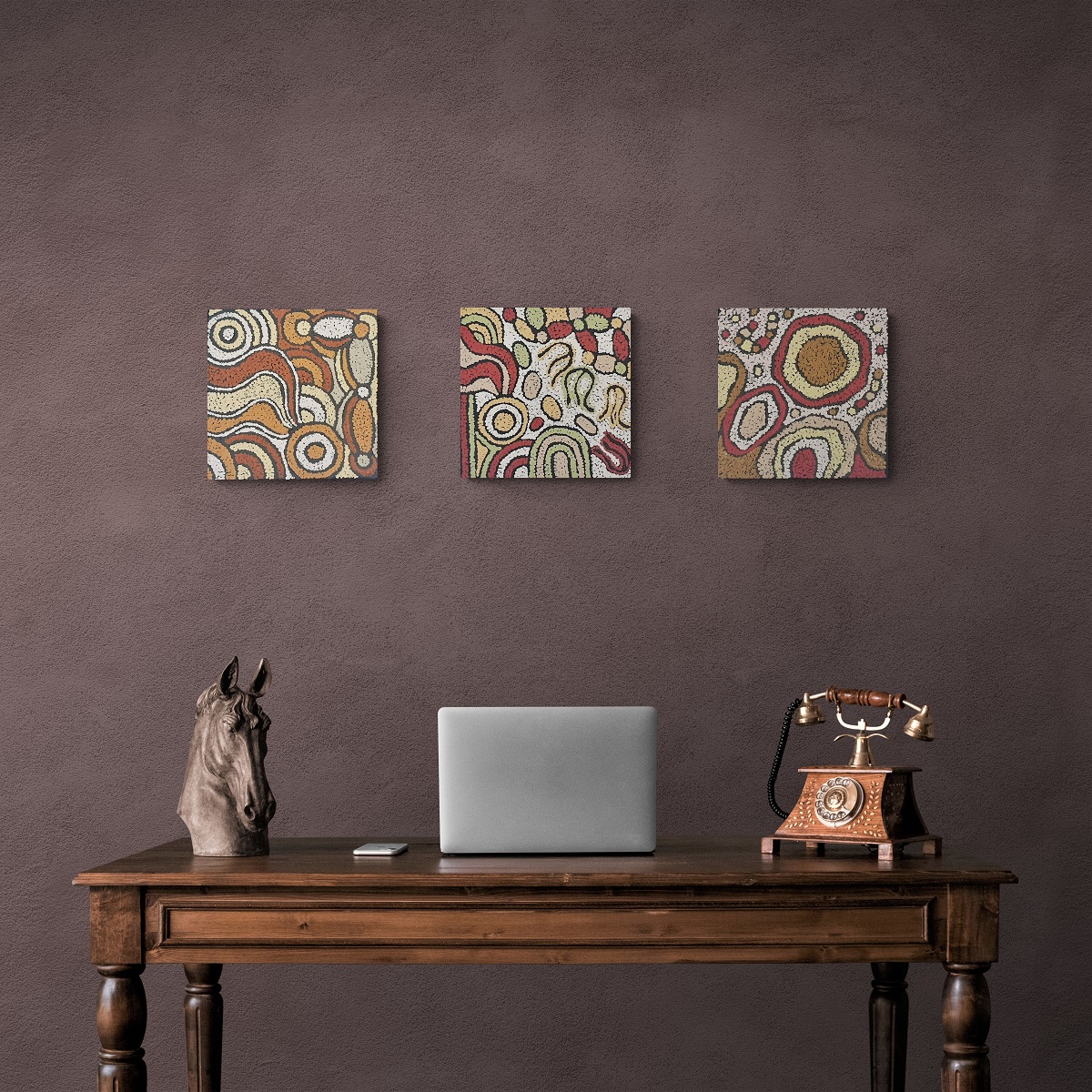Story (Charmaine Napangardi Granites)
This painting tells the story of a Jangala ‘watiya-warnu’ (Acacia tenuissima) ancestor who travelled south from a small hill called Ngurlupurranyangu to Yamunturrngu (Mount Liebig). As he travelled he picked the ‘watiya-warnu’ seeds and placed them in ‘parrajas’ (food carriers), one of which he carried on his head. Watiya-warnu is a seed bearing tree that grows in open spinifex or mulga country. When people returned to their camp after collecting the seeds they would make large windbreaks for shelter and winnow the seed in the late afternoon. Immature ‘watiya-warnu’ seed is ground into a paste and can be used to treat upset stomachs. The associated ‘watiya-warnu’ ceremony involves the preparation of a large ground painting. This Jukurrpa belongs to Nampijinpa/Nangala women and Jampijinpa/Jangala men. In contemporary Warlpiri paintings traditional iconography is used to represent the Jukurrpa, particular sites and other elements. In paintings of this Dreaming ‘U’ shapes are often depicting women collecting the ‘watiya-warnu’ seeds. Oval shapes represent the ‘parrajas’ where they carry the seeds and strait lines beside them frequently portrait digging sticks.









